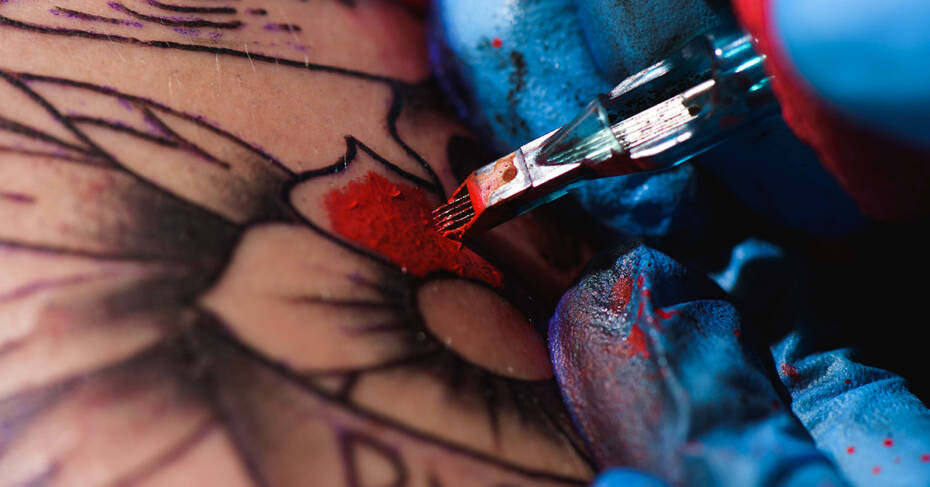Whether you’re 18 or 80, getting your first tattoo can be a big deal as tattoos permanently alter your body. It may also be very daunting to get your first tattoo – tattoo studios can be nerve-wracking spaces to walk into.
Luckily, the industry is changing and most studios are now very welcoming and accessible to everyone. Tattoo artists themselves might look scary, but they are some of the nicest people you will ever meet and most of them are happy to answer any questions you might have.
However, it is also good to be prepared for getting your first tattoo and our guide includes everything you may need to know before, during, and after your first tattoo appointment.
- Research your artist fully before committing to getting a tattoo. Try to find one that is well-suited to the style you are looking to have done.
- Take your time and don’t rush the selection process.
- Don’t go bargain-hunting for your first tattoo. Save up and spend wisely.
- Consider the placement of your tattoo before your appointment. Some areas are a lot more painful than others.
- Make sure to follow your artist’s aftercare instructions.
Getting Your First Tattoo: 10 Do’s, Don’ts, and Everything In-between
Before Your Appointment
1. Choose Your First Tattoo Design
Choosing your first tattoo design is always difficult – there are thousands of ideas out there and honing in on just one might be quite difficult.
The advice that I give to my clients is to think of something meaningful for their first tattoo. An example of this would be a memorial tattoo, a tattoo that commemorates an achievement, or a tattoo with a sibling or parent. These tattoos will most likely never lose their significance which means that you are unlikely to regret them in the future.
Try to choose a design that is not too large or complicated for your first one. I recommend gathering a few reference images that speak to you using either Pinterest or Instagram. You can pick a few elements from each design that you like and your artist will be able to get an understanding of exactly what you are looking for. Consider the style you like as well as the subject matter as this will help you with the next step which is choosing your tattoo artist. After your first tattoo, this step becomes a lot easier as you begin to get an idea of what style and subject matter you prefer.
2. Research Your Tattoo Artist
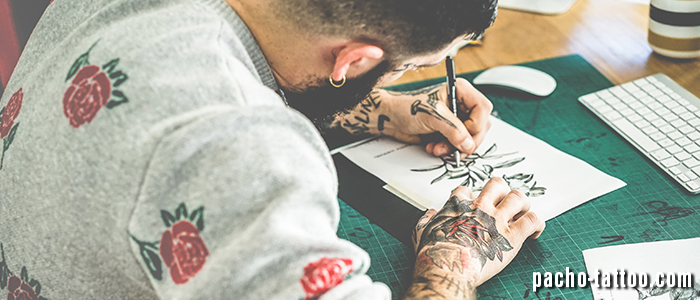

Researching your tattoo artist is one of the most important parts of getting your first tattoo. A good place to start is to ask your friends who have tattoos for artist recommendations and to read Google reviews. Tattoo styles differ greatly from one artist to another and I highly recommend taking the time to find the perfect artist for you. For example, you wouldn’t want a traditional artist to tattoo a realistic portrait, as it might not turn out as amazing as it could if it was done by someone who specializes in that style.
There are a lot of “scratchers” out there to be wary of. They will take advantage of people who are looking to get their first tattoo and may overcharge you, or claim to be able to tattoo your design even though it is out of their skill set. The best way to avoid a bad tattoo artist is to look closely at their quality of work and the cleanliness of the environment they are working in.
3. Choose The Placement
It can be very overwhelming to pick the placement of your first tattoo – you have everywhere on your body to choose from! A good start is to look at photographs of other people’s tattoos for inspiration and see which of them speak to you. I also recommend using a marker to draw on different parts of your body to get an idea of what it may look like on you. Other than aesthetic placement, pain is another thing to consider when choosing the placement of your first tattoo. Some parts of the body are a lot more painful than others:
Painful Areas
I would recommend avoiding painful areas when getting your first tattoo as this can add extra stress to you on the day and might put you off the idea of getting more tattoos in the future.
Sensitive areas with more nerve endings and areas that are close to the bone tend to be more painful. These include ribs, stomach, knees, inner bicep, fingers, elbows, and feet. If you do choose one of these spots, prepare yourself for the pain, and ask your artist if they might recommend a pre-numbing cream.
Less Painful Areas
I would like to call this section “Pain-Free Areas” but all tattoos hurt! The best spot for getting your first tattoo is one of these as they are easy to heal, areas where you don’t need to sit in uncomfortable positions to get tattooed, and don’t often need touch-ups. These areas include your forearm (both outer and inner), front thigh, upper arm/shoulder, back, and side of the leg.
4. Basic Preparation List for The Big Day
- Avoid alcohol and blood-thinning medications as these will make you bleed, which makes the tattoo process difficult.
- Drink plenty of water and eat a good meal before your appointment.
- Make sure to take a shower beforehand and exfoliate the area you are getting tattooed, removing any dead skin.
- Wear clothing that will easily give your artist access to the area of your body you are getting tattooed.
- Bring snacks and water with you in case you start to feel faint.
- Charge any devices such as your iPad, phone, or laptop that you might want to use during your appointment.
- Make sure you are on time for your appointment. Arriving too early may put unnecessary pressure on your artist and arriving late is just a big no-no.
During Your Appointment
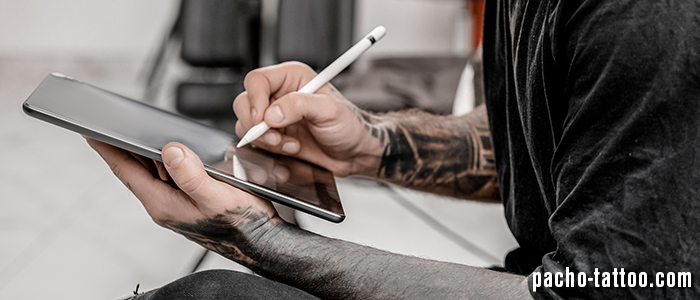

5. The Admin Stuff
When you arrive at your appointment, you will be asked to fill in an indemnity form. This form states that you give consent to the procedure, that you are aware of the risks involved, and that you consent to photos being taken. It may also include a section that states you approve all spelling and dates that may be in your design, and that you have been advised about correct aftercare procedures.
Each studio may have a slightly different indemnity form, but they will most likely cover the above. If the studio doesn’t have an indemnity form this may be a sign that it is not a trustworthy studio.
6. Design, Placement, And Stencil
After you have filled in the indemnity form, you will then be taken to the tattoo room. Your artist will then show you your design – this is your final opportunity to make any changes to the design before the stencil gets printed. Your artist will be able to make one or two changes at this point.
The artist will then print out your stencil and you will choose your placement. A stencil can be re-stuck a few times, so you can ask the artist to move it if you are not happy with the stencil. Once you are both happy with the placement, the stencil will need to dry for a few minutes. Now’s your chance to have a final bathroom break, a breath of fresh air, or a snack before the tattoo starts.
7. Tattoo Time
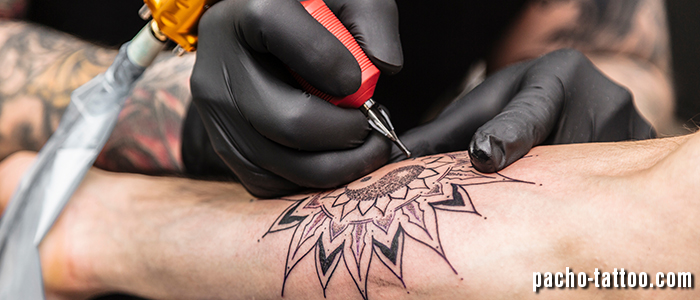

The artist will position you on the tattoo bed in the best way for them to do the tattoo. This might be slightly uncomfortable depending on where the tattoo is on your body. The artist will start with a small line so that you can see what it will feel like, and before you know it your tattoo will be done! You may be curious about what a tattoo feels like. It is similar to a scratch with a sharp pencil on sunburnt skin or a slow cat scratch. Once you have your first tattoo you will understand why it is difficult to explain.
You can ask for breaks during the tattoo if you need them, but keep in mind that the more breaks you take the more the tattoo will hurt and the longer it will take. If you start to feel faint at all, tell your artist so that they can stop tattooing and assist you.
8. After Your Tattoo
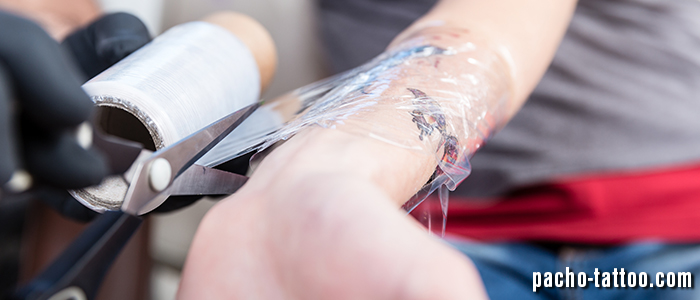

After the tattoo is done, your artist will wait for it to settle a bit and then it’s time for photos. After they have taken photos, the artist will wrap your tattoo in one of two ways (glad wrap or second skin) and explain the aftercare procedure to you. Please listen to what your artist recommends as they know what is best for healing their style of tattooing. The studio might also sell aftercare products so that you don’t have to visit a pharmacy after your appointment for supplies.
9. Time To Pay


You will then be directed to the front of the store where you will pay for your tattoo. You will also have the option to buy any merch or aftercare that the studio may have for sale, or to tip your tattoo artist. Tips are very appreciated but are not necessary. You may have a deposit for the booking which is usually deducted from the final amount on the day of your tattoo. Some studios only accept cash, so make sure what the studio’s payment options are before your appointment.
10. Healing
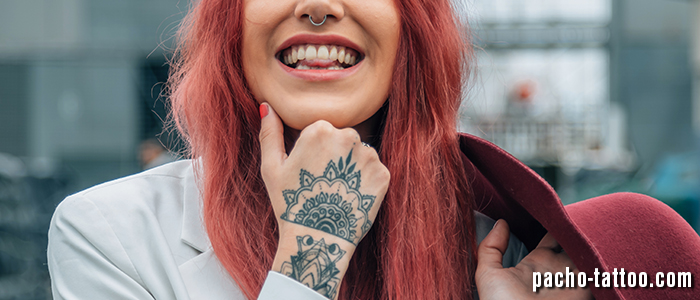

The rest of the tattoo process is now in your hands. Looking after your tattoo is an extremely important part of getting your first tattoo. Read your artist’s instructions clearly and find out what the studio’s policy is for touch-ups. Your tattoo should be fully healed after about 2-3 weeks and if you need a touch up some studios do offer free touch-ups. Once your tattoo is fully healed, keep it bright and fresh by regularly moisturizing your skin and wearing sunblock.
FAQ
Should you get your first tattoo alone?
It is up to you and your artist - some studios don't allow plus ones. It may be better to go by yourself as having a plus one could confuse you and make you doubt yourself. It can also be distracting to have your friends with you during your appointment. If you are very nervous, ask your artist if you can bring a friend with you for support during your appointment.
Is getting your first tattoo a big deal?
Getting your first tattoo can be a big deal, depending on how you view tattoos. It is a permanent decision and you are altering your body forever, for some people this takes a lot of courage and thought. For other people, it is a silly thing they may have done on a whim.
Do tattoos help with anxiety?
Scientifically, tattoos do not help with anxiety. However, they can be a big part of your mental health journey. They can help boost your confidence, cover self-harm scars, and help you feel grounded and hopeful.
Can I shower with my first tattoo?
You can have a quick shower. Don’t soak it in water, and make sure to clean it carefully. You don't want any shampoo residue left on the tattoo and avoid wiping it with your bath towel as these harbor germs.
How do you stay calm during a tattoo?
The best thing to do is breathe calmly. You can also chat with your artist for a distraction. Bring headphones with you so that you can listen to your favorite music or podcast. You can also ask for breaks if you find yourself becoming very overwhelmed.
How long does the first tattoo heal?
Your tattoo should take 2-3 weeks to heal, but it may take longer.
10 Essential Things You Need To Know Before Getting Your First Tattoo
Getting your first tattoo is a big deal but it is not half as scary as you think it is. We like to say that once you have your first tattoo, the bug will have bitten you and it won’t be long until you get your next one. Most of my clients plan their next one while they are sitting in my chair!
Some questions are difficult to answer such as “What does a tattoo feel like” but rest assured that they don’t hurt as much as you might think they do. I hope that this guide has eased your anxiety about getting your first tattoo. If you have any remaining questions, feel free to ask your artist and they should be happy to answer them.
